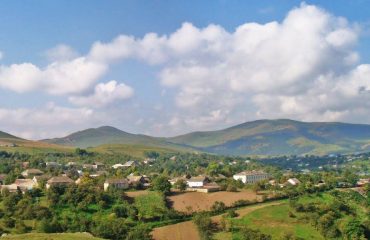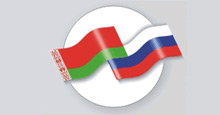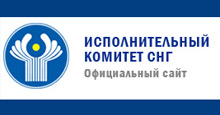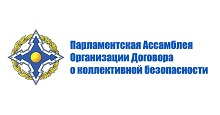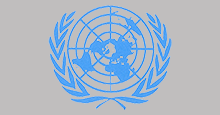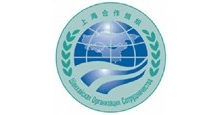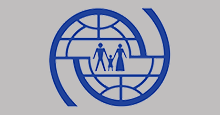On 24 April 2024, in Moscow, at the CSTO Secretariat consultations of the CSTO member states under the chairmanship of the Republic of Kazakhstan on the theme: "On topical issues of arms control, disarmament and non-proliferation" took place.
From 1 to 23 April 2024, the Military Academy of the General Staff of the Armed Forces of the Russian Federation hosted the regular IX Training Courses of the CSTO member states for senior staff and leading specialists of defense departments, law enforcement agencies, security council apparatuses, security agencies and special services, as well as bodies authorized to prevent and eliminate emergency situations.
On 22 April 2024, the CSTO Secretariat hosted a working meeting between the Deputy Secretary General of the Collective Security Treaty Organization, Samat Ordabaev, and the Special Representative of the UN Secretary General for Central Asia, Head of the UN Regional Centre for Preventive Diplomacy for Central Asia (UNRCCA), Kakha Imnadze.
Village of war chiefs
15.01.2020
In the history of the Great Patriotic War there are plenty of examples of the heroic deeds, dedication, and sacrifice of Soviet people. A special section dedicated to the 75th anniversary of the Great Victory of our site “Allies.CSTO”, has numerous articles about feats accomplished by soldiers and officers of the Red Army — glorious sons of almost all the countries-members of the Collective Security Treaty Organization. But the main character of this article is not an air force pilot, not a tank soldier, not a crew nor a team, but the Armenian village of Chardakhlou. Sure, it not an ordinary village, it is the second to none. And what else definition can have this village, if 1250 its residents were called up and left to fight? Two of them - Amazasp Babajanyan and Ivan Bagramyan - became marshals of the USSR, twelve became generals and fifty-seven colonels. And seven of them were awarded the high title of the Hero of the Soviet Union.
I had an occasion to read texts where scientists are still arguing: they say how it turned out that mountain village, where with less than two thousand inhabitants, managed to bring up so many Heroes who were not only fought bravely, but also reached such recognition in military craft and military career. Every fifth resident of Chardakhlou held a high commanding position in the war, all warriors had numerous awards - orders and medals!
We repeat: we can’t call Chardakhlou an ordinary village. The head of the current rural community and local historian Yuri Minosyan told reporters that there has long been a cult of strength and courage in favor.
“Wrestling competitions took place every weekend in the church’s courtyard,” Minosyan said. “Men arranged dams in a mountain stream and bathed all year round. Every homeowner regarded as a mandate to have an unruly bull in his stable. Also, almost every household had powerful shepherd dogs, the famous red wolfhounds. Such dogs as big as two sheeps together, could kill a bear alone. And who could bring to heel such watchdogs? They could obey only a decisive, courageous man with an iron will. These wolfhounds obeyed to and recognized Amazasp Babajanyan as their master... He stood up for the truth and did not forgive wrongdoers. The oldest teacher of Chardakhlou, Arustam Karapetyan, told later that the inhabitants of the neighboring villages were afraid of the future marshal and Hero of the Soviet Union. Because Amazasp, if he sensed a trick in the oncoming one, he “first fought, and then greeted”. For this, the villagers called the future Marshal Babajanyan “kyallaghez,” that means “desperate to madness.”
Amazasp Babajanyan, after finishing five years of the secondary school, worked in his father's farm as utility worker. In 1924 he joined the Komsomol, became the first secretary of the village Komsomol unit. And then he entered the army ...
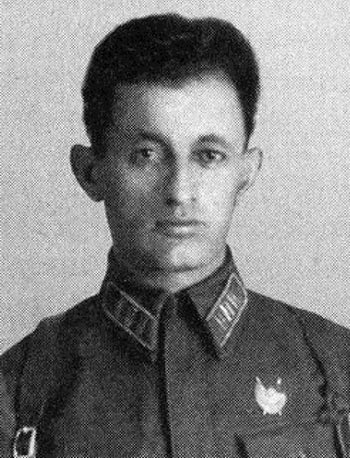
... In the Transcaucasian military infantry school, they began to call Amazasp "Chuto" - "Kid" for his short stature. But the good-natured nickname disappeared by itself after the student Babajanyan, having just five classes of education, in one semester became an excellent student and the best shooter. Just in the first months of his studies, he never went to dismissal. He studied, read, and trained until he became the best in his unit. Later compatriots said that his ancestors would be proud of their descendant. After all, his uncle was the staff captain of the Imperial Army, holder of the St. George Cross, his grandfather's brother became a major general. But even in the kindest and most benign forecasts, no one in Chardakhdlou could imagine that Amazasp would become a marshal. But he became ...
After graduating from the school, Babajanyan went to the military service in the Caucasus region, where he fought against local gangs, and was even wounded in the battle; as well as in the Leningrad military district, where he took part in the Soviet-Finnish war. Here he was wounded once again ...
After recovering, in December 1940, Amazasp Khachaturovich Babajanyan was appointed to the deputy commander position of the 493rd Rifle Regiment, in January 1941 was appointed to the deputy commander position of the 751th Rifle Regiment in the North Caucasus Military District, and in April of that year was appointed to the assistant chief position of the 1st division of the operational department of the 19th Army Staff.
In the beginning of the Great Patriotic War Babajanyan was the commander of the 395th Rifle Regiment of the 127th Rifle Division. He took part in the battle of Smolensk, Yelninsky offensive operation. Later he participated in defensive and offensive battles during the Oryol-Bryansk defensive operation, and then conducted defensive military operations near Kursk and Tim.
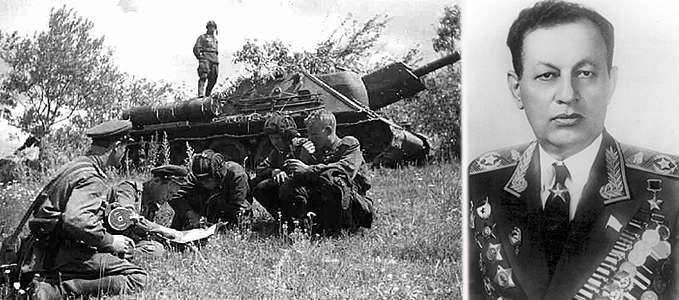
In early June 1942, Babajanyan was sent to study at the accelerated course at Military Academy named after the M.V. Frunze. After the graduation, at the end of August 1942, he was appointed to the commander position of the 3rd Mechanized Brigade, who fought on the Western and Kalinin Fronts. In November-December 1942, he participated in the operation "Mars". After reinforcing the military reserves in May, he arrived at the Voronezh Front with the brigade and took part in the Battle of Kursk. By the way, the Germans called him “Black Panther” on the Kursk Bulge for the daring and speed of maneuvering in tank attacks.
... In October 1943, the 3rd Mechanized Brigade was transformed into the 20th Guards Squadron, that participated in the Zhytomyr-Berdychev, Korsun-Shevchenkov, Proskurov-Chernivtsi and Lvov-Sandomir offensive operations. And here he demonstrated his commander and military strategy skills. There was a good reason that Marshal of the Soviet Union Alexander Mikhailovich Vasilevsky wrote in his memories “Lifelong love”: “The troops of the 1st Ukrainian Front resumed the offensive operation ....Even on March 24 the 20th Guards Mechanized Squadron commanded by Colonel Babajanyan marched to the Dniester river. For this operation the commander was awarded the title the Hero of the Soviet Union”.
Babajanyan commanded the 11th Guards Tank Corps in the Vistula-Oder offensive operation. For the capture of Berlin, the corps was given the honorary name "Berlin”. And "for excellent leadership and conducting offensive battles of the corps to break through the enemy’s defenses and defeat forts and displayed courage and dedication" Amazasp Khachaturovich Babajanyan was awarded the Orders of Suvorov 1st and 2nd degrees. And upon the war, the formations under the command of Babajanyan were mentioned 15 times in the orders of the Supreme Commander of the Armed Forces of the USSR I.V. Stalin.
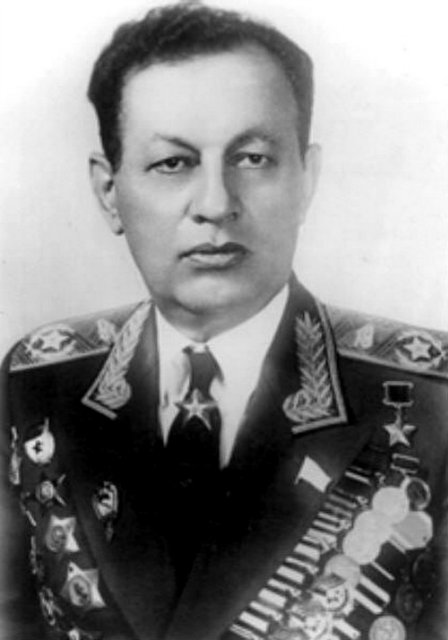
As the war ended, Babajanyan continued to command the corps, that were transformed into the 11th Guards Tank Division in July 1945. Then Babajanyan graduated from the Higher Military Academy named after K.E. Voroshilov, served in the staff and command posts of large military associations. In January 1958, he was appointed to the 1st Deputy commander of troops position and a member of the Military Council of the Carpathian Military District In June 1959, he was appointed Commander of the Odessa Military District, in September 1967, he was appointed Head of the Military Academy of Armored Forces named after Marchal of the Soviet Union R. Ya. Malinovsky, and in May 1969 he was appointed Chief of tank forces of the Soviet Army and a Member of the Military Council of the Land Forces.
... Ivan Bagramyan had engaged his life with the military service too early. He received primary education at the Armenian parochial school in Elizavetpol. Then, in 1907-1912, he studied at the railway school in Tiflis. In 1912-1915, he studied at the technical school, after that he became a practical technician. But he did not have a chance to work for a long time. Having worked only a few months on the railway, in 1915 Ivan Bagramyan joined the army as a volunteer. He began his service in the reserve infantry battalion, then continued it in the 2nd Border Infantry Regiment, and until January 1917 he served in the Caucasian Reserve Cavalry Regiment. As a man of courage and education, Bagramyan was sent to the ensign school. He graduated from the school in 1917.
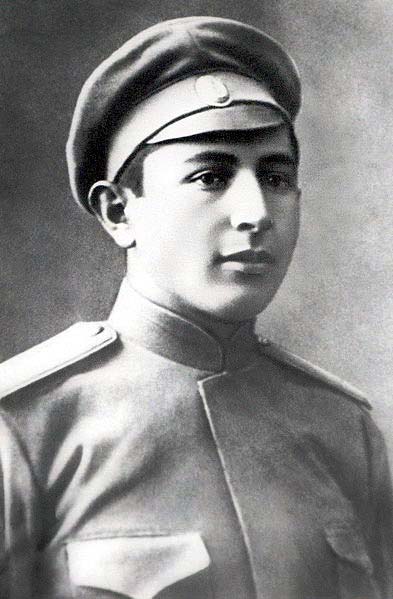
After the revolution, he voluntarily joined the Armenian Red Army as a commander of the squadron of the 1st Armenian Regiment. He participated in the liquidation of the armed Dashnak units and the establishment of Soviet regime in the north of the Republic of Armenia, and then in Georgia. He commanded a squadron, regiment reconnaissance, and the regiment itself... After the Civil War, among other activities, the commander of the Leninakan cavalry regiment, Ivan Bagramyan, was sent to Leningrad to study at the Higher Cavalry School. By the way, such well-known commanders as George Zhukov, Andrei Eremenko, Konstantin Rokossovsky became the course participants along with him...
.. At the beginning of the Great Patriotic War Colonel Ivan Bagramyan was the chief of the operational department - the deputy chief of staff of the South-Western Front. During the Lviv-Cherovtsy strategic defensive operation, he participated in the organization of the first large counterattacks of mechanized corps in the area of Dubno, Rovno and Lutsk.
... In the iron days of the battle for Moscow according to the plan developed by Ivan Bagramyan and with his active participation in command and control of the troops, a Soviet counteroffensive was carried out in the Rostov-on-Don region. Upon this operation, the enemy was knocked out of the city. Also, his plan to defeat the 2nd German Army that attacked the Yelets area was implemented successfully. As a result of the Yelets offensive operation, in December 1941, the forces of the right wing of the Southwestern Front moved to 80-100 kilometers, eliminating the Elets salient, and contributed to the success on other fronts participated in the counterattack near Moscow.
On December 27, 1941, Bagramyan for his excellent work in the staff position in successfully operating groups was awarded the military rank of lieutenant general, and on December 28 he was appointed to the chief of staff position of the South-West direction. In his new position, he participated in the planning of the Barvenkovo-Lozovo operation. As a result of this operation, in the second half of January 1942, the troops of the South-Western and Southern Fronts broke through the enemy’s defenses at the front with a length of 100 km and moved to 90-100 kilometers to the west and south-west, threatening the communication of the Donbass enemy group and contained the considerable enemy forces in this direction.
But not all things went as planned. There were ups and downs. Bagramyan received a severe reproof from Stalin for the failure of the Kharkov offensive operation. It was possible to rehabilitate in the Oryol strategic operation, which later received the code name “Kutuzov”. At the end of April 1943 upon the discussing the operation in the Supreme High Command Staff, Bagramyan proposed to attack the enemy by adjacent military forces in converging directions to encircle and destroy the enemy Bolkhov group. This action should jeopardize the lines of retreat for the entire Oryol enemy group; and then retarget the army to the directions envisaged by the general plan. The front commanders objected, but Stalin supported Bagramyan’s proposals. On July 12, 1943, battle strained cutting edge of Wehrmacht military power, that launched the breakout from Oryol beachhead was attacked by the forces of the Bryansk Front, including the 11th Guards Army, that launched the Oryol operation. The flank strike by Bagramyan’s army was unexpected for the enemy forces. In the first two days of the operation, Red Army troops pierced into the enemy's lines for more than 25 kilometers and rushed to the south. To stop the attackers, the German command began to transfer its troops from the defensive positions from east and south of Orel As a result, the momentum of the offensive of the Bryansk front was increased, and the troops of the Central Front uncorked an advance in the Oryol direction. On July 29, Soviet troops occupied Bolkhov, and on August 5, Orel was completely cleared from the enemy forces.
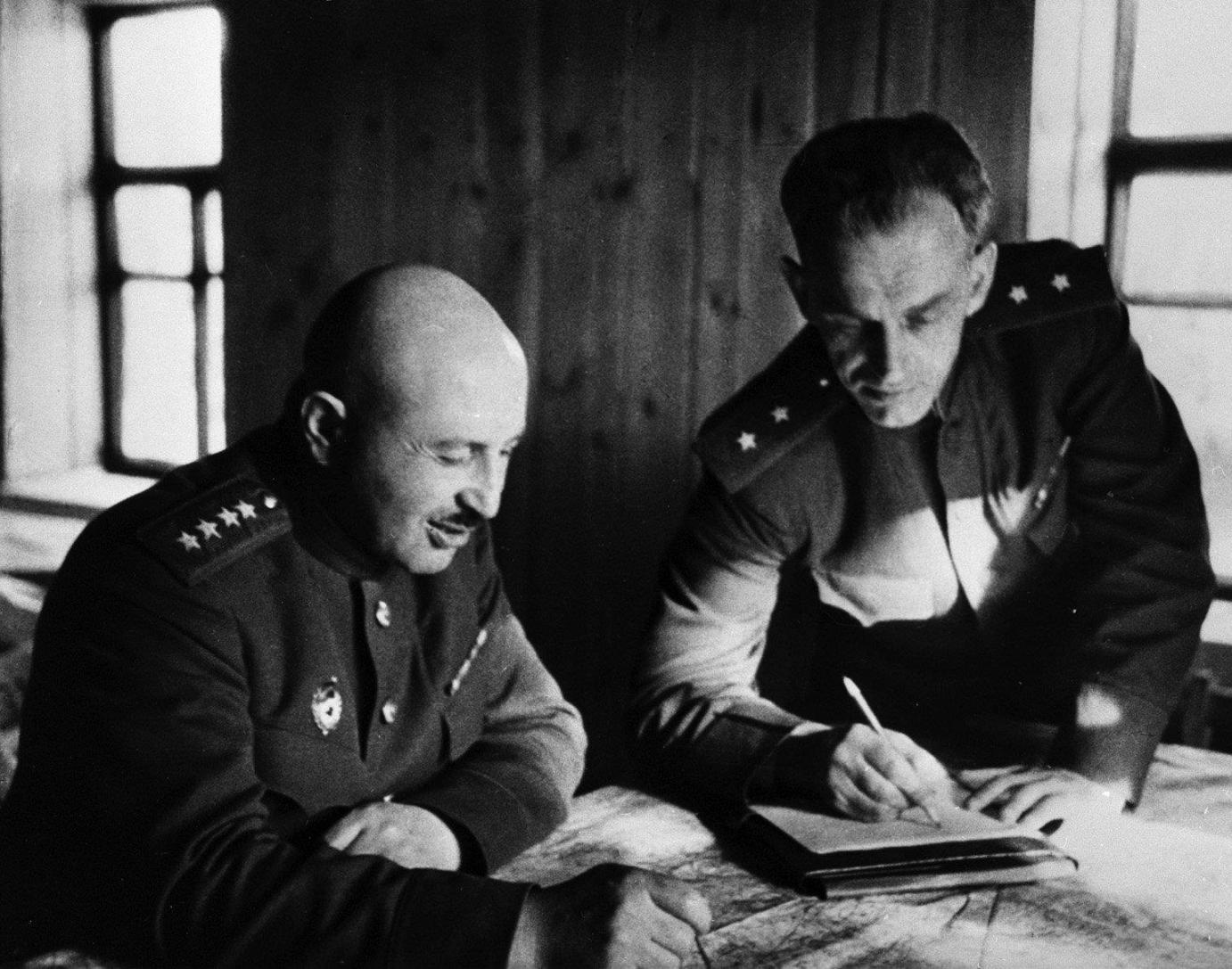
... And in the end of the war Ivan Khristoforovich Bagramyan took part in Koenigsberg offensive operation. By this time, he already commanded the Samland task force of the 3rd Belorussian Front. The Samland task force was designated to take the Prussian citadel. Hitler called the citadel "an absolutely impregnable bastion of the German spirit." It became very clear that this German spirit was pretty deteriorated by April 1945. To ensure a breakthrough of a powerful multi-layered defense, based on fundamentally constructed city forts, its suppression was organized by massive artillery and bombing and striking attacks. Artillery systems of a maximum caliber of 280 mm for that time period were involved. Well-trained strong assault teams went to take forts and other structures. On April 9, just three (!) days after the start of the assault, the commandant of the Koenigsberg garrison, realized that further resistance was useless, and signed an act of unconditional surrender.
On April 26, 1945, Ivan Bagramyan replaced Marshal Vasilevsky, who was leaving for the preparation of a theater of war in the Far East, as commander of the 3rd Belorussian Front. Under his command the forefront forces completed the operation to destroy the Samland enemy grouping. And on June 24, 1945, Bagramyan headed the combined regiment of the 1st Baltic Front at the Victory Parade on the Red Square in Moscow.
And there is one more remarkable fact from the biography of the Soviet marshal from Chardakhlou ... Academician Abram Alikhanov wrote in his memoirs that in November 1948 a house-check was carried out at Bagramyan’s summer cottage as part of the so-called “trophy criminal case”. “They were looking for trophies,” academician Alikhanov explained. “Many military leaders failed there... And later, at the highest military council, Stalin sneered: only Comrade Bagramyan turned out to be clean” ...
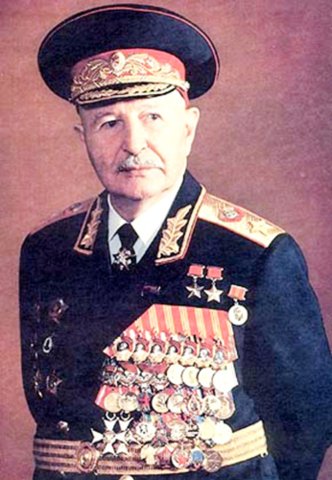
... On March 11, 1955, Ivan Bagramyan was awarded the title of Marshal of the Soviet Union. In the same year, he was appointed to the Deputy Minister of Defense of the USSR position. In 1956, he became the head of the Higher Military Academy named after K.E. Voroshilov, that was later renamed the Military Academy of the General Staff. On June 2, 1958, he was appointed to the position of Deputy Minister of Defense of the USSR. He became the Commander of Support of the Armed Forces ...
... Both Bagramyan and Babajanyan often visited their native village. Bagramyan and Babajanyan had many kindly conversations with fellow countrymen, and helped them at their own expense. With their assistance, a memorial to the Guardian Mother was erected in honor of the fallen villagers in Chardakhlou. Later, in the village, the Chardakhlou residents themselves built a museum of Battle and Labor Glory. The museum kept personal items and various documents, materials of the famous military leaders of the village. About two marshals from Chardakhlou a documentary film "The village of the brave villagers" even was made. They wanted to call the film “Marshals from the village of Chardakhlou,” but Bagramyan opposed, because, according to his earnest conviction, the main characters here were residents. And the name of the film was changed.
... In the Gorbachev troublesome times with the outbreak of the Armenian-Azerbaijani conflict, the residents of Chardakhlou were forced to leave their ancestral village. More than 300 families forever left their homes. Since 1991, the village has the Azerbaijani name Chanlibel, that means "Hummingbird". In fact, the Chardakhlou residents became the first refugees of the Karabakh war. In 2004, Moscow journalists traveled to Chardakhlou on a business trip. They said that at the Armenian cemetery all grave crosses and slabs were turned upside down. Walls of the Two marshals museum were torn, and the museum itself was ravaged. At one time, new residents of the village made a chaikhana there, but it was not sweet for them to drink tea on the place of downtrodden memory - and the building became completely desolated soon.
Now the residents of Chardakhlou moved to the territory of Armenia and founded a new settlement in the north of the country. They called the new settlement Zorakan, that means “Military leader” in Armenian. Who knows what the future holds, probably future marshals are growing up here?
Vladimir Popov

